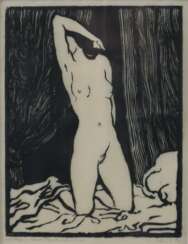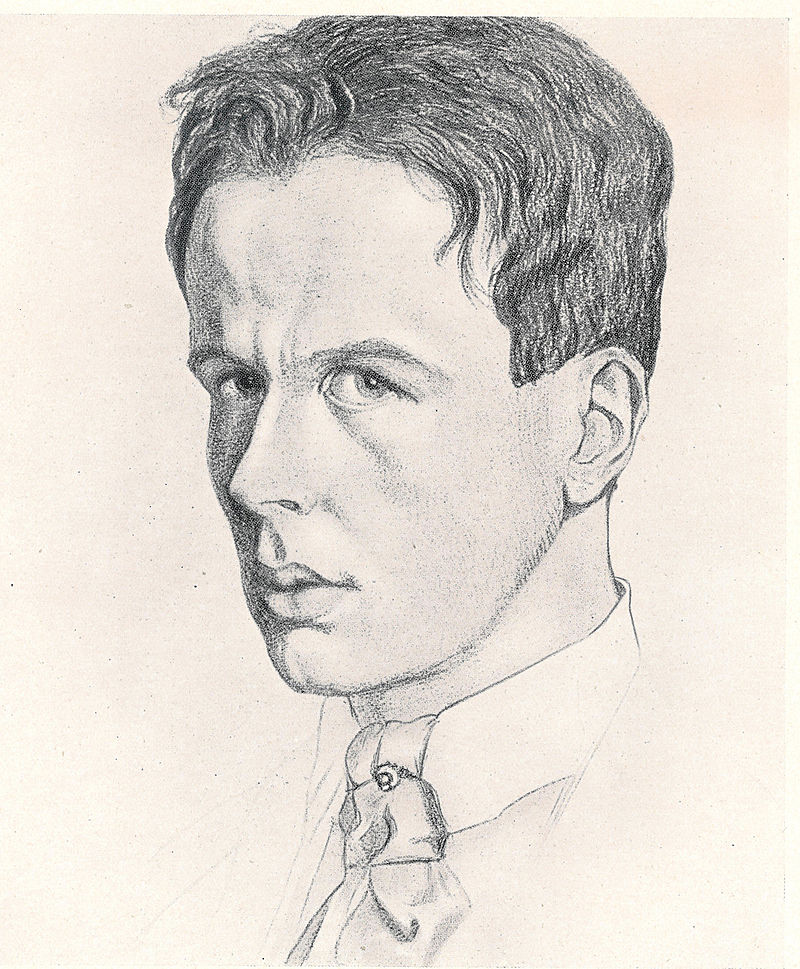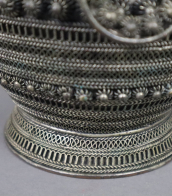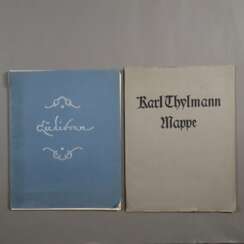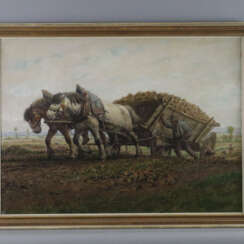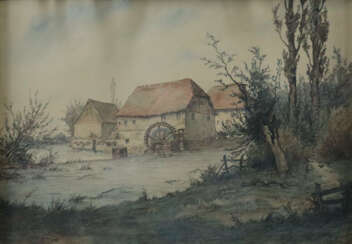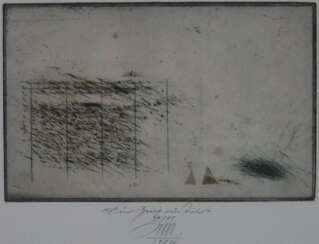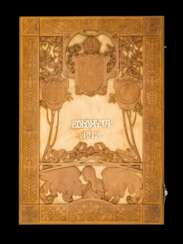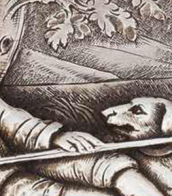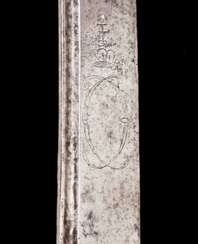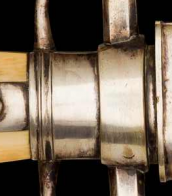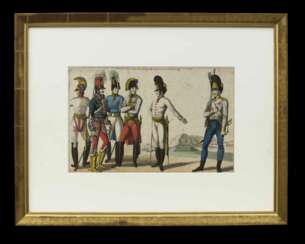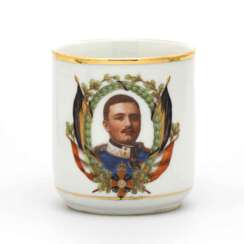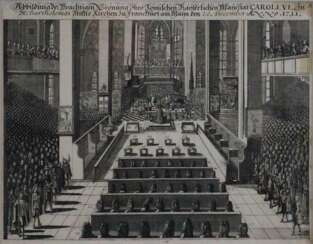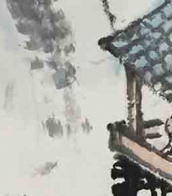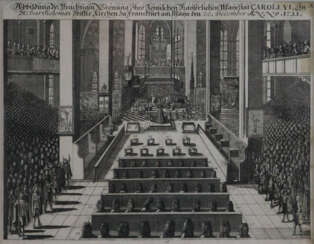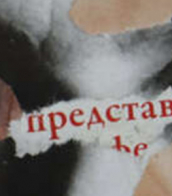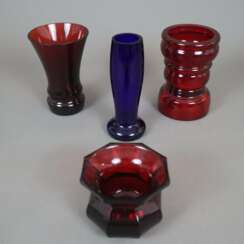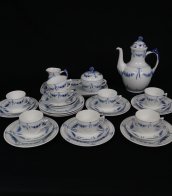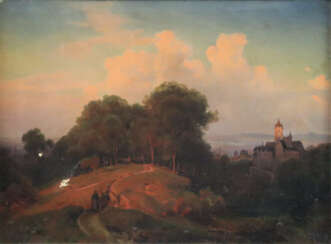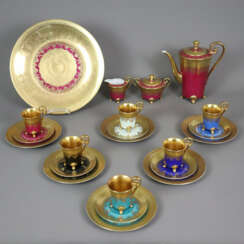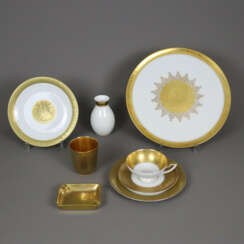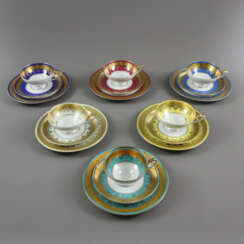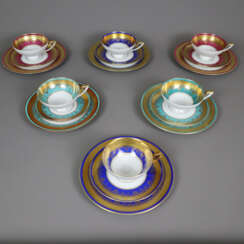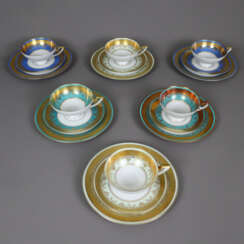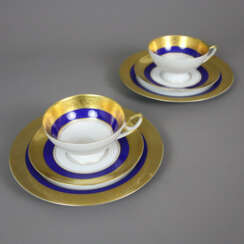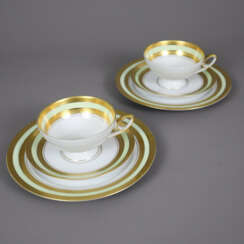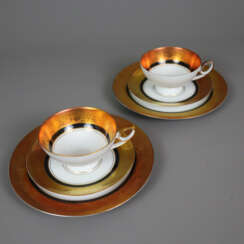karl blank
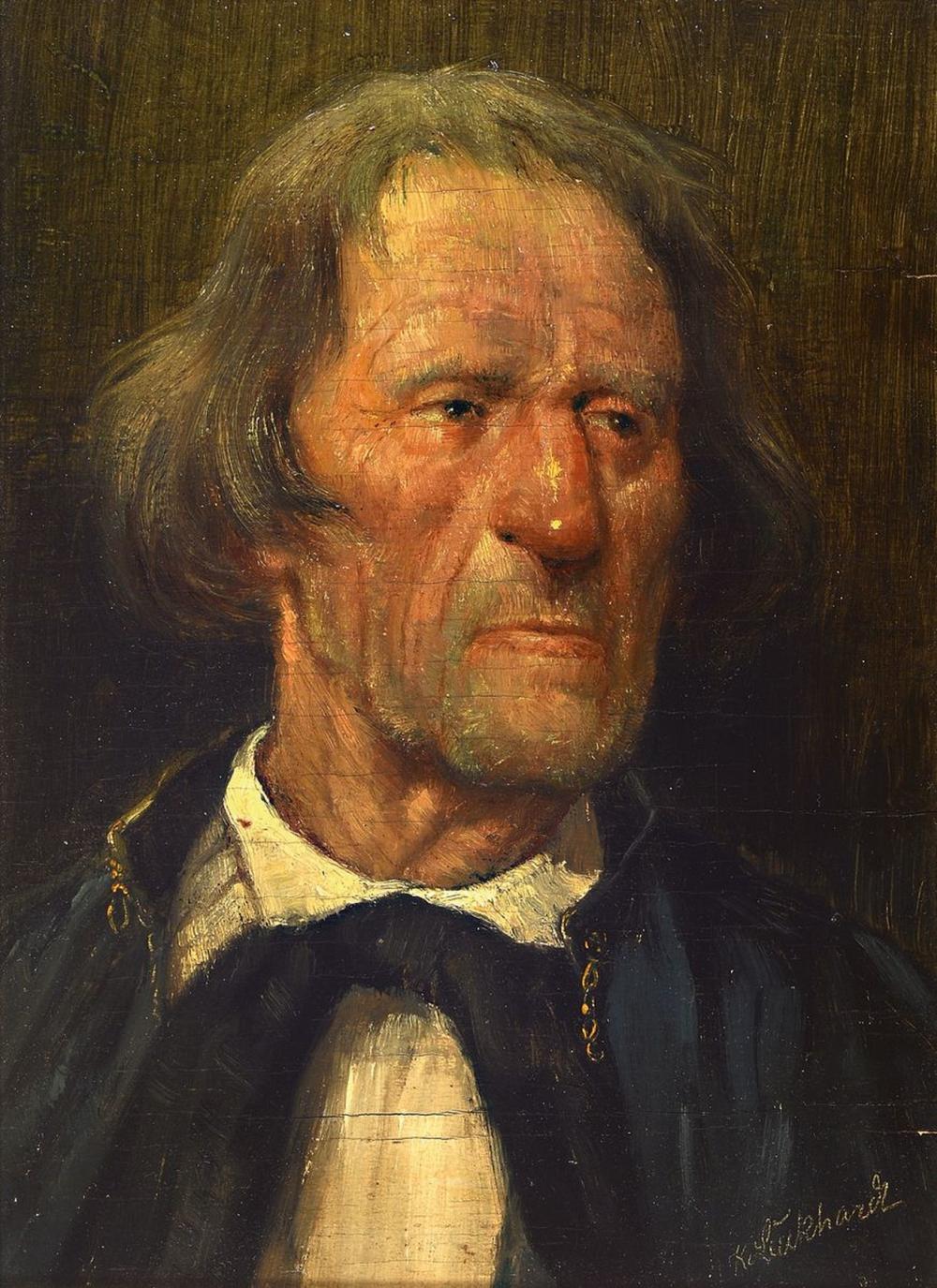
Karl Luckhardt was a painter, draughtsman and etcher. He trained as a lithographer and studied with Emil Gies at the Städel from 1907. After military service and studies in Munich, he settled in Frankfurt as a freelance artist. In the 1920s he became a popular commissioned painter, known for his depictions of rural life. Although Luckhardt fell out of favour after the Second World War, he regained recognition through public commissions and the support of friends. His detailed and sensitive depictions of landscapes, portraits and still lifes were well received by the public. While his work was popular with the public, it was often criticised by art critics for its typecasting. A retrospective in 1985 drew attention to Luckhardt's forgotten early works, including important oil studies, watercolours, drawings and etchings. His preferred subjects included landscapes, country life, animals, portraits and still lifes, with a focus on Frankfurt and its surroundings.
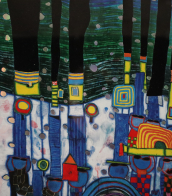

Karl Luckhardt was a painter, draughtsman and etcher. He trained as a lithographer and studied with Emil Gies at the Städel from 1907. After military service and studies in Munich, he settled in Frankfurt as a freelance artist. In the 1920s he became a popular commissioned painter, known for his depictions of rural life. Although Luckhardt fell out of favour after the Second World War, he regained recognition through public commissions and the support of friends. His detailed and sensitive depictions of landscapes, portraits and still lifes were well received by the public. While his work was popular with the public, it was often criticised by art critics for its typecasting. A retrospective in 1985 drew attention to Luckhardt's forgotten early works, including important oil studies, watercolours, drawings and etchings. His preferred subjects included landscapes, country life, animals, portraits and still lifes, with a focus on Frankfurt and its surroundings.


Karl Luckhardt was a painter, draughtsman and etcher. He trained as a lithographer and studied with Emil Gies at the Städel from 1907. After military service and studies in Munich, he settled in Frankfurt as a freelance artist. In the 1920s he became a popular commissioned painter, known for his depictions of rural life. Although Luckhardt fell out of favour after the Second World War, he regained recognition through public commissions and the support of friends. His detailed and sensitive depictions of landscapes, portraits and still lifes were well received by the public. While his work was popular with the public, it was often criticised by art critics for its typecasting. A retrospective in 1985 drew attention to Luckhardt's forgotten early works, including important oil studies, watercolours, drawings and etchings. His preferred subjects included landscapes, country life, animals, portraits and still lifes, with a focus on Frankfurt and its surroundings.


Karl Luckhardt was a painter, draughtsman and etcher. He trained as a lithographer and studied with Emil Gies at the Städel from 1907. After military service and studies in Munich, he settled in Frankfurt as a freelance artist. In the 1920s he became a popular commissioned painter, known for his depictions of rural life. Although Luckhardt fell out of favour after the Second World War, he regained recognition through public commissions and the support of friends. His detailed and sensitive depictions of landscapes, portraits and still lifes were well received by the public. While his work was popular with the public, it was often criticised by art critics for its typecasting. A retrospective in 1985 drew attention to Luckhardt's forgotten early works, including important oil studies, watercolours, drawings and etchings. His preferred subjects included landscapes, country life, animals, portraits and still lifes, with a focus on Frankfurt and its surroundings.


Karl Luckhardt was a painter, draughtsman and etcher. He trained as a lithographer and studied with Emil Gies at the Städel from 1907. After military service and studies in Munich, he settled in Frankfurt as a freelance artist. In the 1920s he became a popular commissioned painter, known for his depictions of rural life. Although Luckhardt fell out of favour after the Second World War, he regained recognition through public commissions and the support of friends. His detailed and sensitive depictions of landscapes, portraits and still lifes were well received by the public. While his work was popular with the public, it was often criticised by art critics for its typecasting. A retrospective in 1985 drew attention to Luckhardt's forgotten early works, including important oil studies, watercolours, drawings and etchings. His preferred subjects included landscapes, country life, animals, portraits and still lifes, with a focus on Frankfurt and its surroundings.


Karl Luckhardt was a painter, draughtsman and etcher. He trained as a lithographer and studied with Emil Gies at the Städel from 1907. After military service and studies in Munich, he settled in Frankfurt as a freelance artist. In the 1920s he became a popular commissioned painter, known for his depictions of rural life. Although Luckhardt fell out of favour after the Second World War, he regained recognition through public commissions and the support of friends. His detailed and sensitive depictions of landscapes, portraits and still lifes were well received by the public. While his work was popular with the public, it was often criticised by art critics for its typecasting. A retrospective in 1985 drew attention to Luckhardt's forgotten early works, including important oil studies, watercolours, drawings and etchings. His preferred subjects included landscapes, country life, animals, portraits and still lifes, with a focus on Frankfurt and its surroundings.


Karl Luckhardt was a painter, draughtsman and etcher. He trained as a lithographer and studied with Emil Gies at the Städel from 1907. After military service and studies in Munich, he settled in Frankfurt as a freelance artist. In the 1920s he became a popular commissioned painter, known for his depictions of rural life. Although Luckhardt fell out of favour after the Second World War, he regained recognition through public commissions and the support of friends. His detailed and sensitive depictions of landscapes, portraits and still lifes were well received by the public. While his work was popular with the public, it was often criticised by art critics for its typecasting. A retrospective in 1985 drew attention to Luckhardt's forgotten early works, including important oil studies, watercolours, drawings and etchings. His preferred subjects included landscapes, country life, animals, portraits and still lifes, with a focus on Frankfurt and its surroundings.


Karl Luckhardt was a painter, draughtsman and etcher. He trained as a lithographer and studied with Emil Gies at the Städel from 1907. After military service and studies in Munich, he settled in Frankfurt as a freelance artist. In the 1920s he became a popular commissioned painter, known for his depictions of rural life. Although Luckhardt fell out of favour after the Second World War, he regained recognition through public commissions and the support of friends. His detailed and sensitive depictions of landscapes, portraits and still lifes were well received by the public. While his work was popular with the public, it was often criticised by art critics for its typecasting. A retrospective in 1985 drew attention to Luckhardt's forgotten early works, including important oil studies, watercolours, drawings and etchings. His preferred subjects included landscapes, country life, animals, portraits and still lifes, with a focus on Frankfurt and its surroundings.


Karl Luckhardt was a painter, draughtsman and etcher. He trained as a lithographer and studied with Emil Gies at the Städel from 1907. After military service and studies in Munich, he settled in Frankfurt as a freelance artist. In the 1920s he became a popular commissioned painter, known for his depictions of rural life. Although Luckhardt fell out of favour after the Second World War, he regained recognition through public commissions and the support of friends. His detailed and sensitive depictions of landscapes, portraits and still lifes were well received by the public. While his work was popular with the public, it was often criticised by art critics for its typecasting. A retrospective in 1985 drew attention to Luckhardt's forgotten early works, including important oil studies, watercolours, drawings and etchings. His preferred subjects included landscapes, country life, animals, portraits and still lifes, with a focus on Frankfurt and its surroundings.

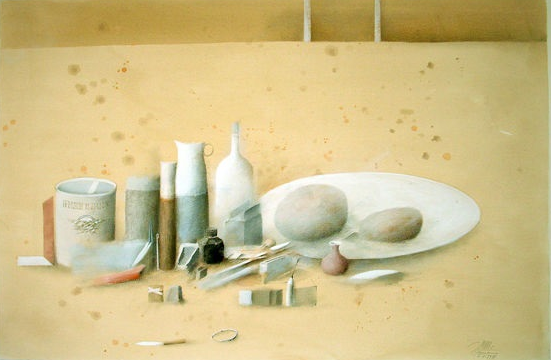
Karl-Ludwig Mordstein was a German artist, celebrated for his abstract art that transcended conventional boundaries. Born in 1937 in Allgäu, his journey in the art world began post his education in Augsburg and Munich, where he developed a unique style characterized by its abstract nature and emotional depth.
Karl-Ludwig Mordstein's work varied across mediums, including painting and graphic art. His artworks, like "Still leben/Still Life" from 1980, showcase his ability to blend color, form, and texture to evoke profound responses. His artistic contributions were recognized in various auctions, with works like "Der Monarch" and "Elli Pyrelli" illustrating his diverse range and depth as an artist.
The artist's life was as rich and varied as his art. After a brief administrative apprenticeship, Karl-Ludwig Mordstein explored different careers before dedicating himself to art. His works, reflecting a deep engagement with abstract expression, continue to attract collectors and art enthusiasts, highlighting his lasting impact on the art world.
For art collectors and experts, Mordstein's works offer a glimpse into the evolution of German abstract art. His legacy, encapsulated in his distinctive artworks, continues to inspire and provoke thought, demonstrating the enduring power of artistic expression.
For enthusiasts of Karl-Ludwig Mordstein's art, signing up for updates on new product sales and auction events is a splendid way to stay connected with his enduring artistic legacy. This subscription ensures you're informed about the latest opportunities to engage with Mordstein's impactful creations.

